Unveiled earlier this year, the new generation of the Hyundai Kona is available in hybrid and electric. We were lucky enough to be able to sit on board the latter and discover this completely reinvented version in more detail. Embark on a little tour of the owner of the electric SUV, rival of the Peugeot e-2008 and other Volkswagen ID.3.
The Hyundai Kona has been present in the Korean manufacturer’s range for a while, since it was launched for the very first time in 2017. In September 2020, a small restyling came to bring a breath of fresh air to the SUV, which was already available in an electric version, which we were able to drive. And now, at the start of 2023, it offers itself a completely reinvented generation.
While waiting for the test, we had the chance to discover in detail this in-depth reworked version, which marks a real turning point for the brand. And we invite you to come on board with us, in order to know our first opinion on the electric SUV.
An ultra-futuristic design
It is never easy to renew a model, especially when it sells very well. This is precisely the case of the Kona, which remainsone of the brand’s best-sellers according to the latest sales figures, second only to the Tucson. But far from resting on its achievements, the Korean firm has decided to be bold with this new generation which benefits from a completely reworked design. The whole is less conventional than before and almost futuristic, with its thin strip of LEDs which runs along the front face and incorporates the lights. An astonishing aesthetic choice, which would rather suggest a concept car.
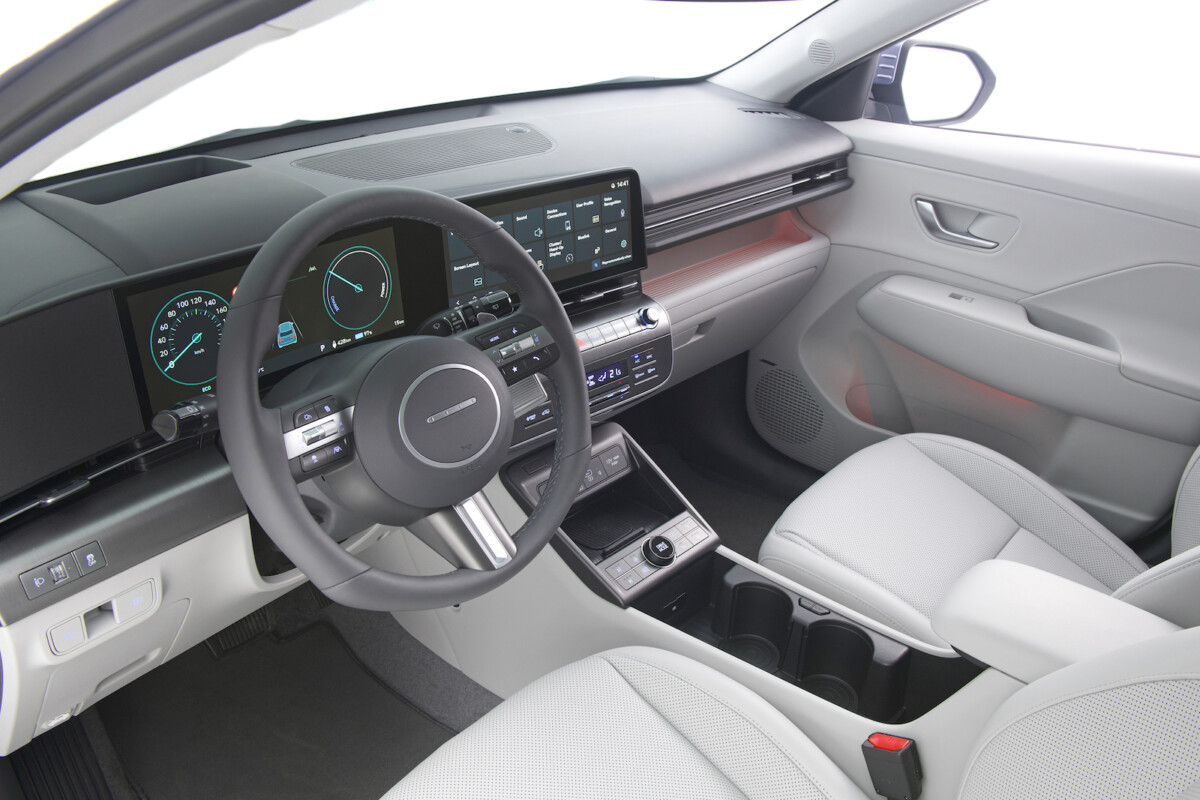
The rest of the front part is refined, but not stripped for all that, since we find dummy air intakes integrating the fog lamps as well asa grille with an original design. We also note the presence of the charging hatch at the front left, although it could have been integrated in a more discreet way. In profile, the electric SUV displays sharply cut sides, while the rear part takes up the elements of the facies and is intended to be almost symmetrical. The SUV displays a rather correct Cx (drag coefficient) of 0.27, which is still far from the 0.20 of the Mercedes EQS, the record for a production car, recently beaten by the Lucid Air at 0.197.
4.35 meters long, the new Hyundai Kona gains about fifteen centimeters compared to the old version, while it measures 1.83 meters wide and 1.57 meters high. Generous dimensions for a compact model, which benefit the habitability.
Driving position: classic and practical
And precisely, it is now time to install us on board the new Hyundai Kona, in order to see what it is worth on this subject. With its wheelbase displayed at 2.66 meters, this 2nd generation gains 6 centimeters compared to the old one. And it is true that we are rather well installed in this SUV, both at the front and at the rear.
The driver benefits from seats with very precise electrical adjustments, with buttons found on the seat. These are heated and ventilated and offer fairly decent comfort as well as good support. The upholstery is very pleasant to the touch, with a very soft and perforated fabric, which gives it a more sporty appearance.

At the rear, access is facilitated by the wide opening of the doors, while space is very good, both for the head and for the legs. A real asset for the electric SUV, which remains a compact model, but which is one of the largest in its category, compared to the Toyota C-HR and other Peugeot e-2008 and Renault Mégane E-Tech. Too bad, however, that the belt line is a little high, which makes the passenger compartment quite dark, already the presentation is quite austere with its dark gray upholstery. This one is rather flattering to the eye, with a satisfactory perceived quality and correct adjustments. However, we would have liked a little more daring in this fairly classic driving position.
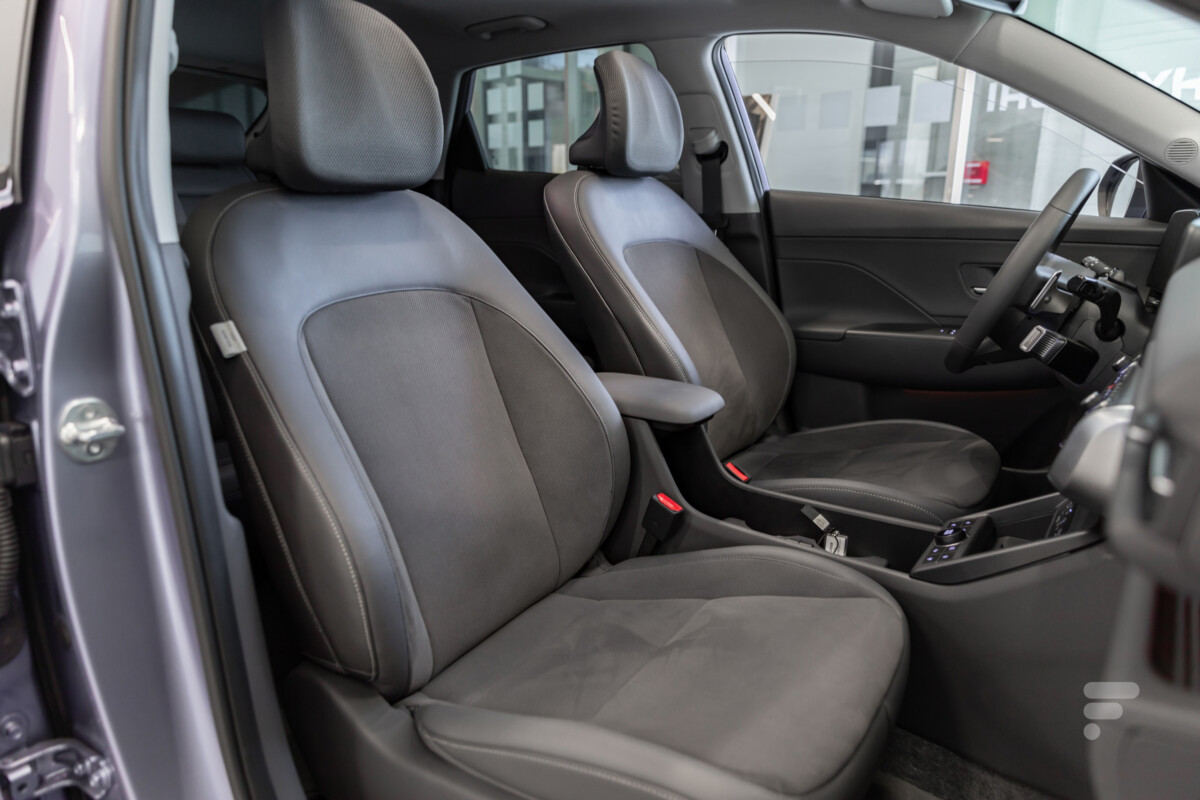
On the other hand, strong point for ergonomics since the manufacturer has chosen to keep real buttons and not to centralize everything in the touch screen. If some could criticize the lack of modernity, in particular of the central part, we appreciate for our part this strategy. The controls are visible and it is easy to find your bearings in this well thought-out cabin.
However, we would have liked a little more storage, especially in the center console. On the other hand, the trunk sees its volume increase to 466 liters, against only 361 for the old version. Note that the size does not change depending on the engine and that a frunky (front trunk) of 27 liters completes it at the front.
Infotainment: no revolution but some improvements
If Hyundai is changing in depth the driving position of its new Kona, the infotainment system is also concerned. Thus, the manufacturer gives in to the trend and offers its electric SUV a large digital panel made up of two screens. The first acts as a digital handset and displays all driving data in a very uncluttered but clear manner. No information overload unlike other manufacturers, and that’s fine. For its part, the12.3-inch center screen embeds the infotainment system which remains in line with the brand’s latest creations.
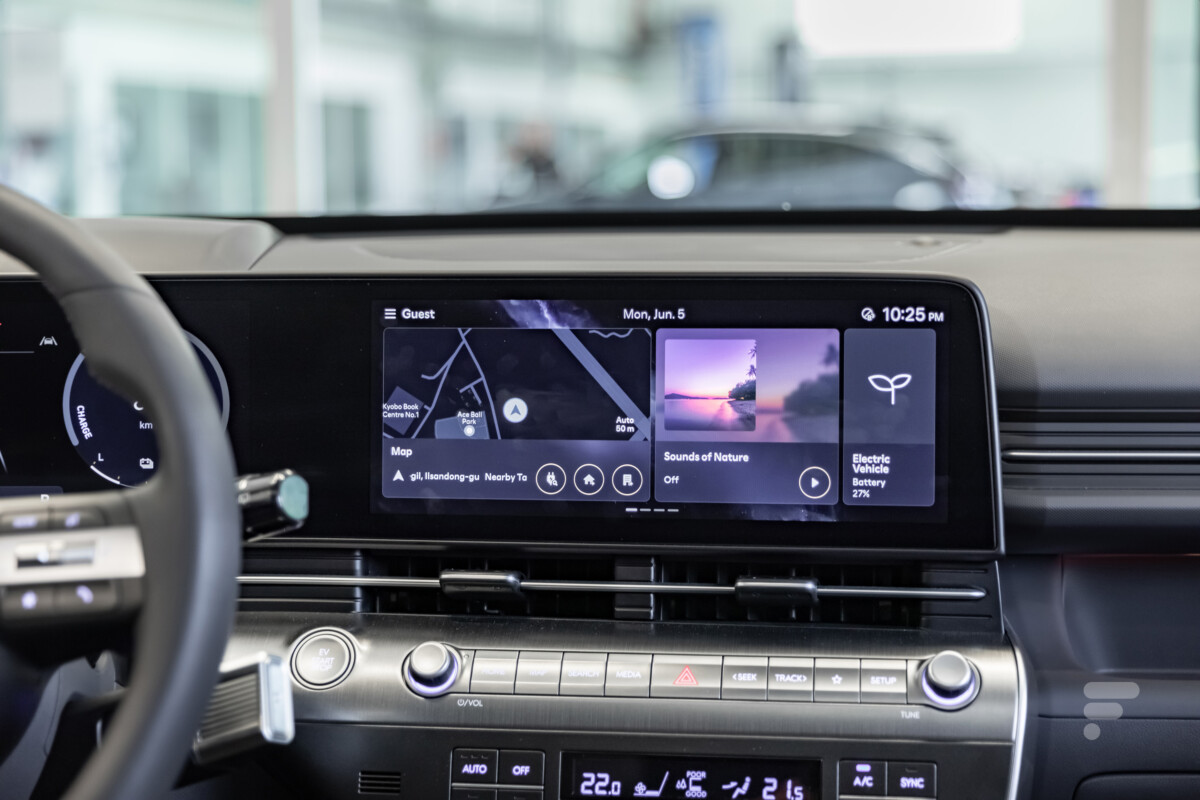
The presentation is sober and here again well thought out, even if the menus are numerous. We are a thousand miles from Volkswagen, where many customers had criticized the lack of ergonomics of the screen. Everything is very fluid and above all the responsiveness is there.
Note that this system is for the very first time compatible with remote OTA updates. A feature that allows you to take advantage of the latest software developments, without having to go to the garage and which also equips the Ioniq 5 and Ioniq 6. The screen is also associated with a 12-inch head-up display projected onto the windshield which we will test in more detail in a future test.
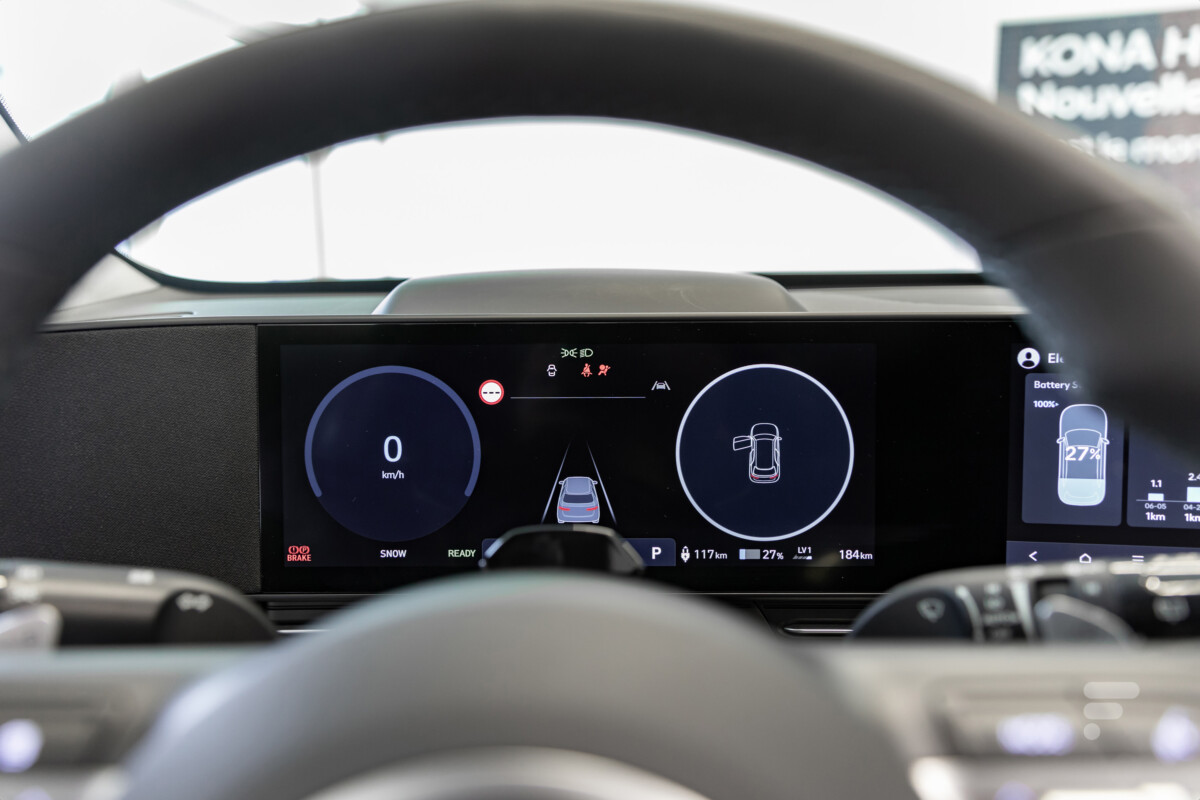
Access on board as well as starting can be done via NFC technology via a smartphone, but we did not have the opportunity to try this feature during our hands-on. Finally, two USB-C sockets are available at the front, as well asan induction smartphone charger well integrated. The compartment is easy to access and allows you to have your phone close at hand when needed. Even if it is not necessary since the Hyundai Kona is compatible with Apple CarPlay and Android Auto.
Motorization, autonomy and recharging
Like the older generation, the Hyundai Kona is available hybrid and electric with two versions offered in the catalog. The first develops 218 horsepower while the second claims 156, for an identical torque of 255 horsepower. They do not share the same batteries, since the first has a 48.4 kWh pack supplied by LG (against 39 kWh previously) which allows it to travel up to 342 kilometers according to the WLTP cycle. The second is equipped with a 65.4 kWh accumulator (against 64 kWh) allowing it to display a range of 490 kilometers WLTP.
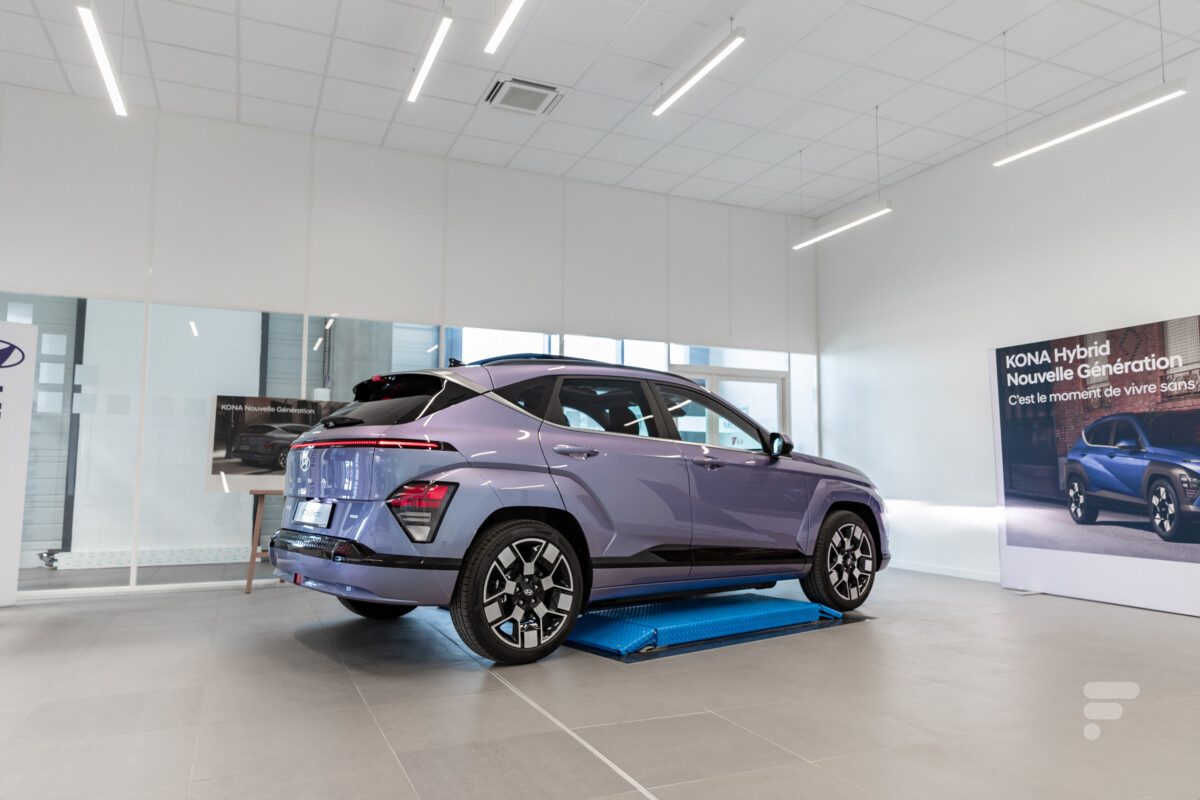
For the record, the older generation oscillated between 305 and 484 kilometers only. A leap forward that also comes with an improvement in fast charging. In fact, you have to count 41 minutes to go from 10 to 80%, against 47 so far. The power is limited to 103 kW in direct current, which remains little compared to the 232 kWh of the Ioniq 5. We do not know, however, if the SUV is equipped with a heat pump, like the Renault Mégane E-Tech , among others. We know that it is however equipped with bidirectional V2L charging, which allows objects to be powered directly via the charging socket.
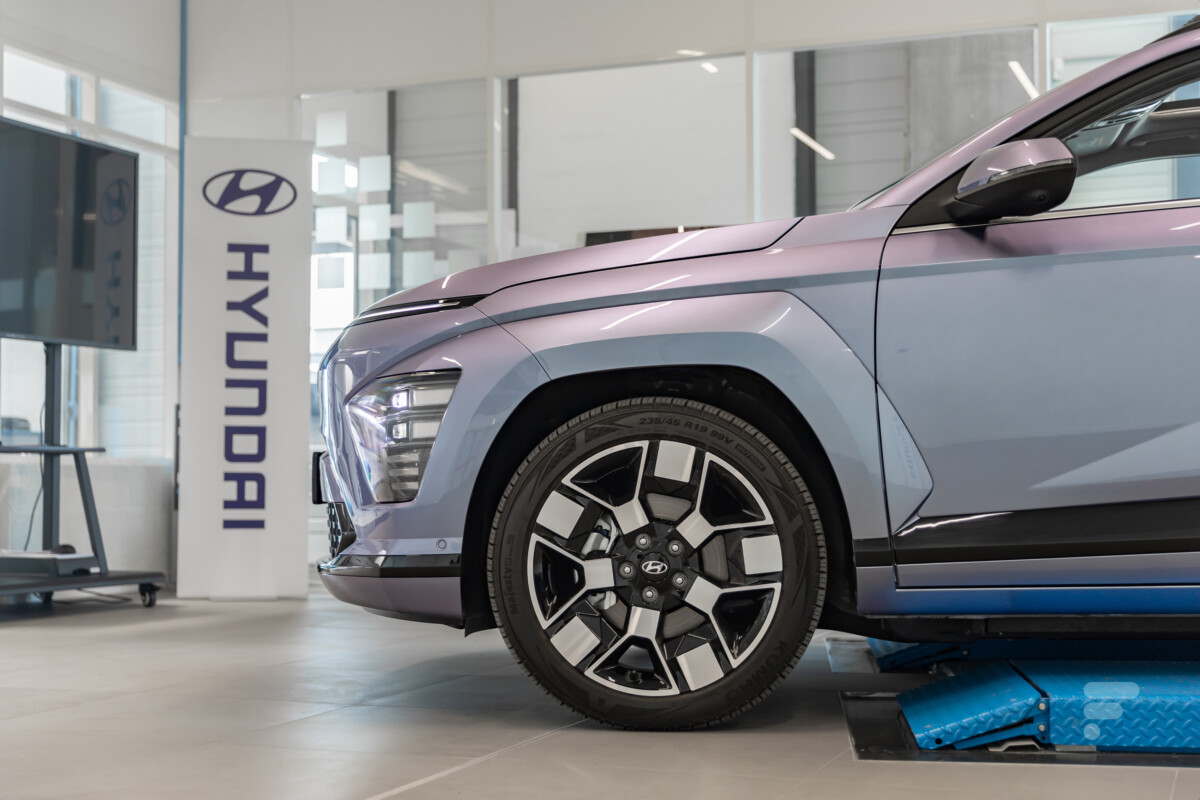
A technology that can also be found on the MG4 and other higher-end models such as the Volvo EX90. The new Hyundai Kona also features braking regeneration, the power of which can be adjusted via the steering wheel paddles as is already the case on the brand’s other models. It also comes with one-pedal driving like the Nissan Leaf or Tesla Model Y. Level 2 autonomous driving is also included, although again we can test it in more detail a little later.
Price and availability
Orders are already open for the Hyundai Kona hybrid and the first deliveries are scheduled for this summer. On the other hand, it will take wait until september to see the electric version arrive in concessions.
If the SUV starts from 33,400 euros, we do not yet know the prices for the zero-emission variant (exhaust), which should probably rather get closer to 40,000 euros. In any case, it should remain eligible for the ecological bonus of 5,000 euros, although the highest finish could exceed the 47,000 euro mark. It now remains to know the detailed range of this new electric generation, which could differ slightly from that of the hybrid.
